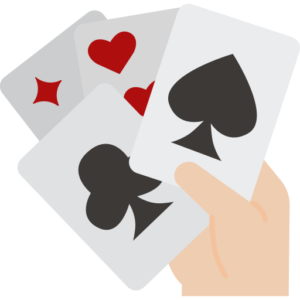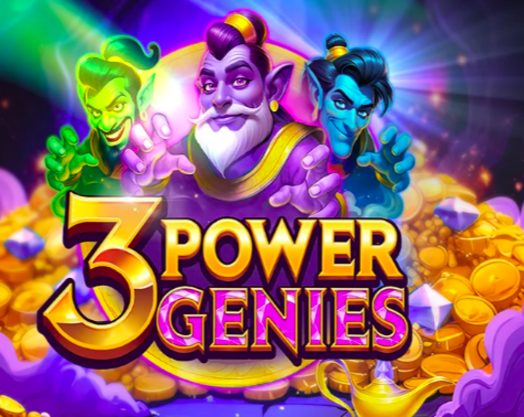Glossary Term
Down Cards
Down Cards
Used In: Poker
Introduction
In poker, down cards are cards dealt face down to each player. These cards remain hidden from other players until a showdown or a specific point in the game, depending on the rules of the variant being played. The most important aspect of down cards is that only the player who holds them can see their value. This adds an element of secrecy and strategy, as each player must rely on their own cards and observations of other players to make informed decisions.
The role of down cards in poker is crucial because they shape a player’s decisions throughout the hand. Since the other players cannot see these cards, each player must carefully consider how to use their down cards in combination with the community cards, betting patterns, and the actions of others. The hidden nature of down cards means that players can bluff, mislead others, or even make risky bets based on incomplete information. As a result, down cards are essential for creating uncertainty and strategic depth in the game.
The number of down cards dealt depends on the specific type of poker being played. In Texas Hold’em, for instance, each player is given two down cards, while in Seven-Card Stud, players receive a mix of face-up and face-down cards over multiple betting rounds. The way these down cards are used and revealed throughout the game plays a significant role in determining the winner of each hand. Whether they are used to complete a strong hand or to bluff an opponent, down cards are central to the strategy and excitement of poker.
In Depth Look
Down cards are a fundamental part of many poker games, particularly in variants like Texas Hold’em and Seven-Card Stud. These cards are dealt face down, meaning only the player who receives them knows their value. The hidden nature of down cards introduces a crucial element of secrecy and strategy into the game. Players must rely on their observations of opponents, the community cards, and the betting patterns to make informed decisions. The ability to bluff or mislead opponents based on what down cards might be in play is a key part of poker strategy. Since no one can see a player's down cards, the game is filled with uncertainty, making every action important.
Understanding how to use down cards effectively is a skill that often separates experienced players from beginners. In games like Texas Hold'em, where each player is dealt two down cards, those cards can be used to form the best possible five-card hand in combination with the five community cards. In contrast, Seven-Card Stud features a more complex set of rules, with each player receiving a mix of down and up cards over several rounds. In both cases, the information provided by the down cards is vital for a player's decision-making, including whether to bet, raise, fold, or call. Managing down cards correctly, while reading opponents’ actions, can give players a significant edge.
Key Points:
- Down cards are face-down cards dealt to players, hidden from other players until revealed.
- These cards play a major role in a player's strategy, influencing their decisions based on limited visible information.
- The number of down cards dealt varies by poker variant, but they are central to hand formation and bluffing strategies.
Mechanics
The mechanics of down cards in poker involve how and when these cards are dealt to players. At the start of the game, each player receives a certain number of down cards, depending on the variant being played. In Texas Hold’em, for example, players are dealt two down cards, while in Seven-Card Stud, players are dealt one down card initially, with more down cards dealt in later rounds. These cards are dealt face down, meaning only the player holding the cards can see their value. As the game progresses, players use their down cards along with community cards (in games like Texas Hold’em) or their own up cards (in games like Stud) to form the best possible hand.
The down cards remain hidden until the relevant stage in the game. For example, in Texas Hold’em, after the first betting round, no more down cards are revealed, but the community cards are dealt face up for everyone to see. In Seven-Card Stud, the down cards are revealed in stages throughout the betting rounds. The mechanics of down cards require players to carefully manage their private information, using it to build their hand while considering the possible hands of their opponents. Understanding how to utilize down cards effectively, without giving away too much information, is key to successful poker play.


Illustrated Example
Imagine you’re playing a game of Texas Hold'em. You and the other players are dealt two down cards each. Your cards are the 7♠ and 9♣, while the player to your left has the K♦ and Q♠. No one can see these cards except for the players who hold them. The dealer then places three community cards face up on the table — the 10♥, J♦, and 3♠.
At this point, the flop is revealed, and the players with down cards must now decide how to act based on what they see. You have a straight (7♠, 8♣, 9♣, 10♥, J♦) and are in a strong position. Your opponent, however, is still working with high cards (K♦, Q♠), and doesn’t have a hand yet. Both players will consider how to bet, taking into account the other player’s potential hand and the fact that no one knows each other's down cards.
In this situation, your down cards are crucial to your decision-making. Without them, your hand would be much weaker, and you'd likely be less confident in your betting. If the river card (the 5♠) had been revealed and given your opponent a pair of kings, you might have lost, despite the strength of your initial hand. This example shows how down cards can make or break a player’s strategy, as they hold the key to forming strong hands while also providing the opportunity to bluff and mislead others.
| Player | Down Cards | Community Cards | Best Hand | Hand Strength |
|---|---|---|---|---|
| You | 7♠, 9♣ | 10♥, J♦, 3♠ | Straight (7-10-J) | Strong |
| Opponent | K♦, Q♠ | 10♥, J♦, 3♠ | High Cards (K-Q) | Weak |
Player Perspective
Down cards are the key to forming a competitive hand in poker. These cards are dealt face down, which means that no one else at the table knows what you’re holding. This private information is crucial for making decisions throughout the game. If you're playing a game like Texas Hold’em, where you have two down cards, they work together with the community cards to create your best possible five-card hand. Knowing what’s hidden in your hand allows you to assess whether to bet, raise, call, or fold. The uncertainty created by down cards also provides opportunities for bluffing, as you can mislead opponents about the strength of your hand.
At the same time, down cards require careful management. The other players can't see your cards, but you can see theirs if you're observant, especially when they reveal their up cards or make certain bets. Understanding how your down cards fit into the larger picture of the community cards is essential. For example, if your down cards form a potential straight or flush, you can take calculated risks and apply pressure on other players through betting. However, if your down cards are weak, you may choose to fold early and avoid losing chips. Ultimately, the down cards are what make poker more strategic, as each decision you make is based on hidden information and the potential to outsmart your opponents.
Conclusion
In conclusion, down cards are a fundamental aspect of poker that shape both the strategy and excitement of the game. These face-down cards provide players with hidden information, allowing for strategic decisions based on incomplete knowledge. Whether it’s forming a strong hand, bluffing, or reading opponents, down cards are crucial in creating a dynamic, unpredictable environment. Mastering how to use and interpret down cards can significantly improve a player's chances of success, as it requires a combination of skill, observation, and timing.
The Top Online Casinos for Playing Poker
These platforms prioritize player satisfaction by providing intuitive interfaces, seamless gameplay experiences, and robust security measures to ensure a fair and enjoyable environment for all users.


Author
Branimir Ivanov | Senior News Contributor








